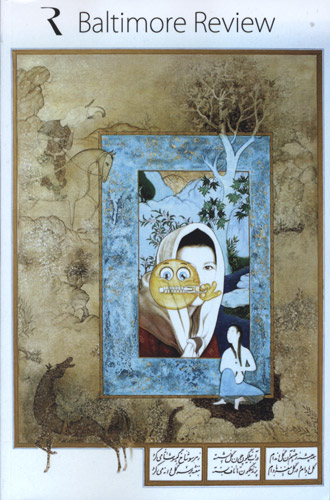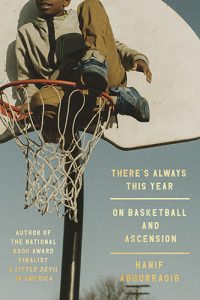The Baltimore Review – 2017
I barely knew how to start with the 2017 edition of The Baltimore Review. It is huge. There are 325 pages of poetry and prose, a culmination of four online issues from Summer 2016 to Spring 2017. A little history in the Editor’s Note gave me a better sense of what I was delving into. The Baltimore Review has been around since 1996 and became an independent nonprofit organization in 2004. Though based in the Baltimore area, the journal accepts work from anywhere, and publishes online to a vast audience. There is such a wide variety of voices in the fiction pieces. There are stories about ballet dancers, dogs, gardeners, a young girl in Hawaii caring for her grandfather, an imagining of the future of online avatar use. The journal also feels current. The cover is a gorgeous painting by Sughra Hussainy featuring a self-portrait obscured by the zipped lip emoji, a statement about how women are often told to remain silent, even now. The Baltimore Review is not a place for silence. It’s a raucous collection of talented voices, passionate about a wide range of topics. It’s 325 pages of fresh new work.
I barely knew how to start with the 2017 edition of The Baltimore Review. It is huge. There are 325 pages of poetry and prose, a culmination of four online issues from Summer 2016 to Spring 2017. A little history in the Editor’s Note gave me a better sense of what I was delving into. The Baltimore Review has been around since 1996 and became an independent nonprofit organization in 2004. Though based in the Baltimore area, the journal accepts work from anywhere, and publishes online to a vast audience. There is such a wide variety of voices in the fiction pieces. There are stories about ballet dancers, dogs, gardeners, a young girl in Hawaii caring for her grandfather, an imagining of the future of online avatar use. The journal also feels current. The cover is a gorgeous painting by Sughra Hussainy featuring a self-portrait obscured by the zipped lip emoji, a statement about how women are often told to remain silent, even now. The Baltimore Review is not a place for silence. It’s a raucous collection of talented voices, passionate about a wide range of topics. It’s 325 pages of fresh new work.
The Summer 2016 and Winter 2017 issues named winners of themed contests. Summer 2016’s theme was “Games.” The first-place winner was Terri Trespicio with a short story called “The Rules of Boxball,” which delves into the telling nuances of playground games like boxball, kickball, and boys chase girls. Trespicio pays extra attention to parallels between these early social interactions in games and learned behaviors surrounding gender that will impact the speaker later in life. She writes, “These aren’t the last women I’ll face down. This is just the last time the rules will be so clear, so obvious. Later, the games will change. Sometimes you won’t know you were playing, let alone whether you’ve won or lost.” Trespicio’s take on the game theme reminds us that the games we create and the rules we learn sometimes won’t leave us.
Winter 2017’s theme was “milestones.” The second-place winner caught my attention for its form, which is kind of like a WikiHow step-by-step guide to being a male ballet dancer, except the steps are personal accounts of the speaker’s life. “A Professional Male Ballet Dancer in Twelve Steps” by Kendall Klym describes the homophobic abuse that young boys who dance endure and illustrates in great detail the rigorous and often painful training a professional dancer undertakes. Still, the speaker cherishes the art, a labor of love. “Turning is sex and a whole lot more. It starts in the ballet studio or on stage and lasts until you get home, take a shower, get into bed, and close your eyes.” This story vividly builds the world of male ballet from the start of a dancer’s life to the height of their career.
The poetry in this edition is equally diverse and beautiful. I was particularly drawn to a poem called “I Know the Science of the Thing” by M. Ann Hull. I am a sucker for poems that feel researched and this one uses the wonders of science to describe flowers, yet there’s something bigger that is harder to catch in the language of science. Hull writes: “. . . they have both / anthers and ovaries; that they are made to be fragile and, as a result, / are all the more explosively beautiful when they bloom.” The poem also seems to describe pregnancy. She describes the science of lungs, of a first breath. Though we know the science, the process, their fragility and the wonder of newborns combine to make something much larger and unspeakably beautiful.
This hardly scratches the surface of the writing in this journal. It is a collection you can carry around for awhile and read here and there. And if you want a sampling of pieces before you get the print edition, go ahead and check them out online. All the pieces I talked about and more are posted for your reading pleasure.
[www.baltimorereview.org]





